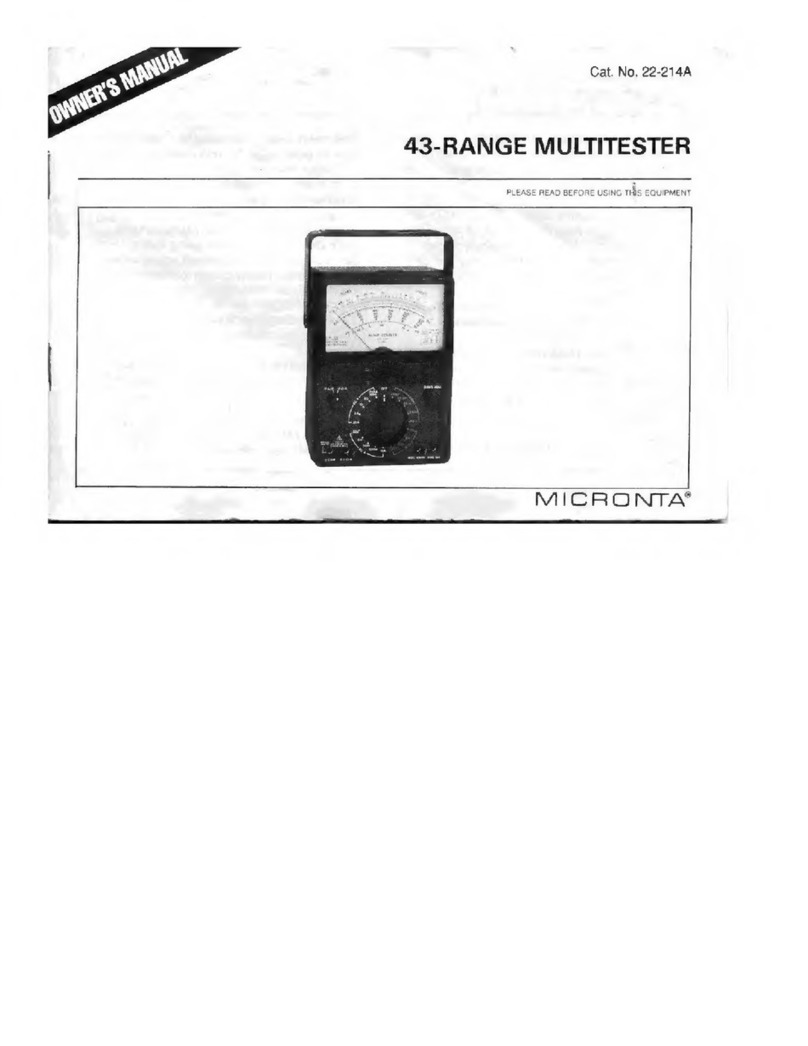
USING YOUR MULTITESTER
You'll need one 9-volt battery for the 20 Megohm range, one AApenlight
cell for other resistance ranges. We recommend our 23-583/553 for 9V,
23-582/552 for AA. Remove the back cover and install batteries in the
correct compartment. Observe proper polarity. Replace the back cover.
If you can't adjust the pointer to "0" on the OHMS scale, replace the
battery with anew one.
Remember: Never leave weak or dead batteries in your unit. Even "leak-
proof" ones may leak damaging chemicals. Also, if you are not going to
use your unit for aweek or more, remove the batteries.
For most accurate readings, keep the meter lying flat on anon-metallic
surface. Also, use arange and range doubler switch setting that results in a
reading in the upper 1/3rd of the meter scale.
To read the scale, look at it from the point where the pointer and its reflec-
tion on the mirror come together; otherwise, the parallax will cause an
error in the reading.
If the pointer does not normally rest exactly over "0" at the left side of
the scale, adjust the plastic screw in the lower center of the meter face to
bring the needle to "0."
Always observe correct test lead polarity when making DC measurements:
black into the ©COM and red into the ©V-&-A (or ©DC 1000V or ©
DC 10A) jacks.
The maximum input limit for voltage and current measurement between
®V-fi-A and ©COM is 1000V AC, 250V DC and 500mA DC.
Exercise extreme caution when measuring voltages of 150 and above.
When not in use, always leave the range switch in the OFF position.
Use the range doubler switch as follows:
For resistance readings, always use the V-fi-A position.
When using the V-A/2 position for all other functions, divide the range
switch setting by 2and read on an appropriate scale. For example: range
set to 250 AC Vand V-A/2 -the range is 125 volts (250 divided by 2)
and you should read the red scale, following the 0to 125 markings. An-
other example: lead in ©COM and ©DC 10A with range set to 10A and
V-A/2 -the range is 5amperes (10 divided by 2) and you should read the
black scale, following the 0to 50 markings.
-4-





























